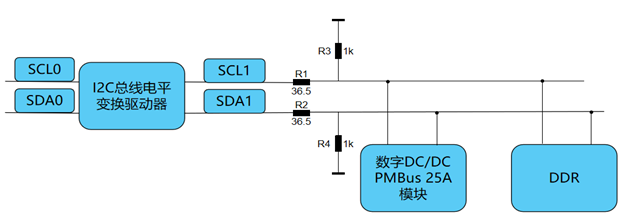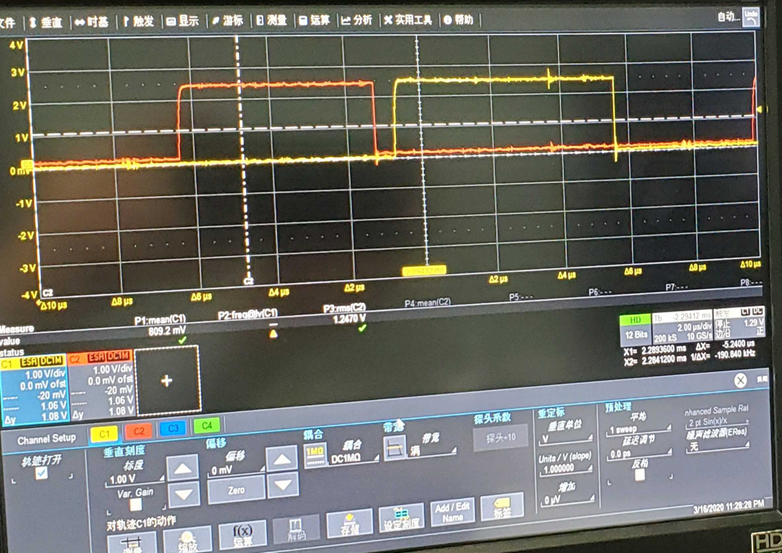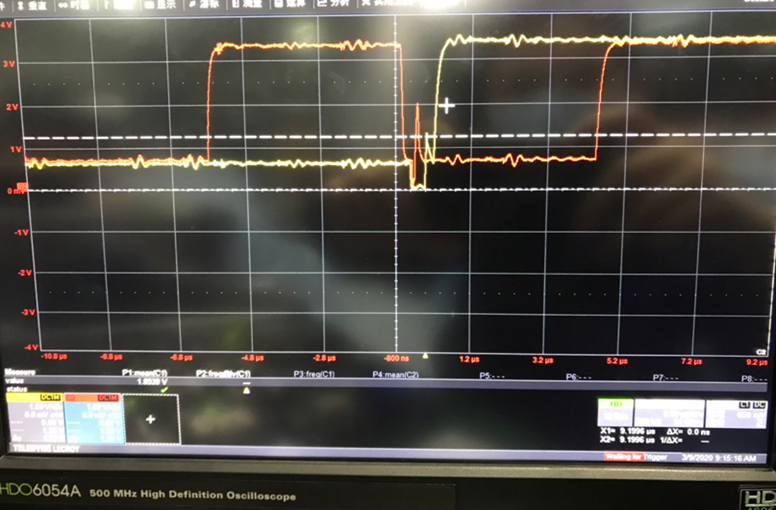Other Parts Discussed in Thread: TCA9517
Hi,
When my customer is using PCA9517, they are facing a question.
here is their block diagram:
"I2C总线电平变换驱动器" is PCA9517.
"数字DC/DC PMBUS 25A模块" is a DC/DC power module with PMbus.
here is the input waveform:
the yellow one is SDA0, the red one is SCL0.
but we find a spike on SCL output,
the yellow one is SDA1, the red one is SCL1.
After we remove R1 and R2, the spike disappeared.
Our question is: why there is a spike on SCL on B side? ow to avoid it?
Thank you.
Best Regards




